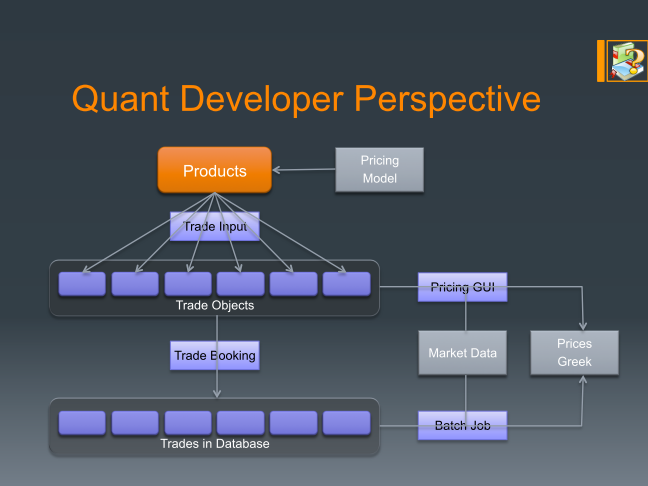The allegorical tale of Ants and Grasshoppers is often used to drive home the inevitable connection between handwork and success, as well as laziness and hardship. Or between talent and riches, indolence and penury. Here is another story that may run contrary to this message.
Tag Archives: money
Income Inequality
I read on BBC yesterday that the richest 62 people in the world now earn as much as the poorest half, which would be about 3.5 billion people! Although there is some confusion about the methodology, it is clear that the wealth and income have been getting more and more polarized. The rich are certainly getting richer. Income inequality is more acute than ever.
How to Start an Internet Business
Starting a business online is easier than you think. Succeeding in one is another story, of course. First of all, you need a product or service, which had better be something that people want. In my experience, what people want most is to make money. Anything that helps them make money is a good product. Second, you need a way of collecting money and delivering the product or providing the service in return for payment. Third, you need to get visibility.
Where to Go from Here?
We started this long series with a pitch for my book, Principles of Quantitative Development. This series, and the associated eBook, is an expanded version of the non-technical introductory chapters of the book — what are the things we need to keep in mind while designing a trading platform? Why is it important to know the big picture of finance and banking? Hopefully, these posts have given you a taste of it here. If you would keep a copy of the series handy, you can purchase and download the beautifully crafted eBook version.

We went through the structure of the bank from the exotic and structured trading perspective. We talked about the various offices (Front Office, Middle Office and Back Office) and pointed out the career opportunities for quantitative professionals within. The organizational structure of the bank is the apparatus that processes the dynamic lifecycle of trades.
If the structure of the bank is akin to the spatial organization, the lifecycle of the trade is the temporal variation; their relation is like that of the rails and the trains. We spent quite a bit of time on the flow of the trades between the front office and middle office teams, how the trades get approved, processed, monitored, settled and managed. Each of these teams has their own perspective or work paradigm that helps them carry out their tasks efficiently.
Trade Perspectives was the last major topic we touched upon. As we saw, these perspectives are based on the way the various teams of the bank perform their tasks. They form the backdrop of the jargon, and are important if we are to develop a big-picture understanding of the way a bank works. Most quants, especially at junior levels, despise the big picture. They think of it as a distraction from their real work of marrying stochastic calculus to C++. But to a trader, the best model in the world is worthless unless it can be deployed. When we change our narrow, albeit effective, focus on the work at hand to an understanding of our role and value in the organization, we will see the possible points of failure of the systems and processes as well as the opportunities to make a difference. We will then be better placed to take our careers to its full potential.
Other Trade Perspectives
In the previous posts, we saw how various teams view the trading activity in their own work paradigm. The perspective that is most common in the bank is still trade-centric. In this view, trades form the primary objects, which is why all conventional trading systems keep track of them. Put bunch of trades together, you get a portfolio. Put a few portfolios together, you have a book. The whole Global Markets is merely a collection of books. This paradigm has worked well and is probably the best compromise between different possible views. The trade-centric perspective, however, is only a compromise. The activities of the trading floor can be viewed from different angles. Each perspective has its role in how the bank works.

From the viewpoint of traders, the trading activity looks asset-class centric. Typically associated with a particular trading desks based on asset classes, their favorite view cuts across models and products. To traders, all products and models are merely tools to make profit.
IT department views the trading world from a completely different perspective. Theirs is a system-centric view, where the same product using the same model appearing in two different systems is basically two completely different beasts. This view is not particularly appreciated by traders, quants or quant developers.
One view that the whole bank appreciates is the view of the senior management, which is narrowly focussed on the bottom line. The big bosses can prioritise things (whether products, asset classes or systems) in terms of the money they bring to the shareholders. Models and trades are typically not visible from their view from the top — unless, of course, rogue traders lose a lot of money on a particular product or by using a particular model.
When the trade reaches the Market Risk Management, there is a subtle change in the perspective from a trade-level view to a portfolio or book level view. Though mathematically trivial (after all, the difference is only a matter of aggregation), this change has implications in the system design. The trading platform has to maintain a robust hierarchical portfolio structure so that various dicing and slicing as required in the later stages of the trade lifecycle can be handled with natural ease.
When it comes to Finance and their notions of cost centers, the trade is pretty much out of the booking system. Still, they manage trading desks and asset classes cost centers. Any trading platform we design has to provide adequate hooks in the system to respond to their specific requirements as well. Closely related to this view is the perspective of Human Resources, who decide incentives based on performance measured in terms of the bottom lines at cost-center or team levels.
Middle Office
The perspective employed by the Middle Office team is an interesting one. Their work paradigm is that of queues running in a first-in, first-out mode. As shown in the picture below, they think of trades as being part of validation and verification queues. When a new trade is booked, it gets pushed into the validation queue from one end. The Middle Office staff attacks the queue from the other end, accepting or rejecting each entry. The ones deemed good get into a second verification queue. The bad ones are returned to the trading desks for modifications in the trade entries or possible cancellations.

A similar paradigm is employed in dealing with market operations such as fixing rates, generating cash flow etc. Market operations have their own two-stage queues. Note that the whole flow is to be facilitated by the trading platform, which should have the capability to render different views. It presents a queue-based view of the data to the middle office staff, and a report-based view to the Market Risk Management team, for instance, or a trade-centric view to most of the other teams. It is important to each team to have a basic grasp and healthy respect for the work paradigm of the other so that they can communicate efficiently with each other. It is no good ignoring the trade perspectives of the rest of the bank. After all, such trade perspectives evolved naturally out of years and years of trial and error.
Quant Developers
Unlike quants, quantitative developers are more product-centric. Their job is to take the pricing models (the output of the quant effort) and make them deployable and accessible to the traders, sales teams and the middle and back offices. Their primary unit of work is a product because when the product definition changes, regardless of whether it uses a new or an existing pricing model, they have to integrate it into the system. Even if it is merely a product variant, they have to implement all the infrastructure and take care of the approval processes for its downstream handling. For this reason, the work paradigm that makes most sense to a quantitative developer is product-centric.

Compared to the quants, the quantitative developers are closer to the day-to-day activities on Front Office and Middle Office. They view the trades (identified by unique IDs) as instantiations of products. Once booked, they end up in the trading platform database as distinct objects with attributes defined in trade inputs. In addition to trade input, they use market data feeds to price a product in the form of a trade. The trading platform comes with a pricing interface which combines trade information and market data. It also runs in what they call batch mode — regularly at a given time of the day to compute prices and sensitivities of all trades. Since it is the trading platform that performs the batch job, the quantitative developers may take care of the associated resources like the grid computing platforms, market data feeds, trade databases etc. In this respect, their product-centric perspective may get diffused into a trade-centric view.
Quants
If you are a quant, you are a mathematician with an advanced degree in mathematics or physics. Your work is based on both academic research and professional, peer-reviewed publications. You take your inputs from them, apply your own formidable intelligence to come up with a stochastic pricing model that you think will work exceptionally well for a class of products. You will also need the details of the products. Your output is, of course, a pricing model of your own, or an implementation of a pricing model from the literature. This is your primary work unit.

In order to make use of this pricing model, it will have to be validated. Then a set of products using the pricing model will be defined and submitted for approval. Once approved, with the help of trade inputs and market data, each of the products can be priced and booked into the trading platform. But such activities are outside the sphere of interest and influence of the quant. To them, how a product is instantiated into a trade is pretty irrelevant and trivial. It is merely a question of specifying the trade and market inputs to the pricing model. Even how various products are derived is mechanical, and all the “real” work is done in the pricing model.
This perspective, though accurate and functional for a quant, is pretty far removed from the view of the rest of the bank, which is why quants sometimes have the dubious reputation of being out of touch with the industry. The point is not so much that they have to change their perspective, but they should appreciate that there are other equally valid perspectives held by other business units they interact with, and make an effort to know them.
Trade Perspectives
The last section of this post series is on trade perspectives. In fact, our earlier sections on the static structure of the bank and the temporal evolution of the trade have been in preparation to this last section. In the next couple of posts, we will see how the quants, quantitative developers and the middle office professionals (and the rest) see trades and trading activity. Their views are important and need to be accommodated in the design philosophy of any trading platform.
Where do these perspectives come from and why do we need to know about them? Trade perspectives are based on the work paradigm specific to each business unit. Because of what aspect of the trading activity a group focuses on, they evolve a paradigm, or a mental model, that works best for them.
In order to understand, let’s take a look at how we work with a modern personal computer. The paradigm we are presented with is one of a desk and a filing cabinet. So we have a desktop, folders and files. They have become so natural for us now that we cannot imagine another way of interacting with a computer at all. The Internet, on the other hand, is built on a paradigm of something that hovers over us, which is why we “down”-load stuff from it and “up”-load stuff into it. But the programmers and architects who develop such paradigms often do work with different and less known paradigms as well; for instance we have ports and sockets and streams and so on.
If we do not appreciate the work paradigm, we will find the jargon that comes with it mysterious and incomprehensible. This is especially true if we are to work on projects that cut across multiple business units with differing paradigms.

To illustrate it further with an example from our trading world, let’s look at how we identify a trade. The quants really do not care about the trade identification number; for them, it is the pricing model that is the basic unit that they work with. The quantitative developer, on the other hand, would like the identifier to be something unique per trade. A structurer would like to have one identifying reference for the trade with possible sub IDs for the individual sub trades that make up a structure. While this requirement is easy enough to implement, the software architecture also has to cater to trade cancellation and amendment requirements from Front Office and Middle Office. What happens when a structure is modified or canceled? How do we find and deal withall the related trades? This problem will almost invariably ends up requiring a link ID in the database. Trade number amendments on a live deal create problem for documentation and operations staff as well, who might demand another immutable external reference number attached each trade. Audit will require integrity and indelibility on everything, demanding database record duplication. As we can see, the perspectives and work paradigms of each business unit translate to often conflicting requirements on the program design at a fundamental level. It is for this reason that we will take close look at the trade perspectives in the following posts of this series.
Summary — Life of a Trade
With that we have come to the end of our discussion on trade lifecycle. We talked about pre-trade activities such as the quant work on pricing model, and its validation by an independent team. On a per-trade basis, we have the sales and credit check activities. Once a trade is initiated, it goes through the initial validation work by Middle Office, followed by regular processing by a large number of teams, such as Market Risk Management for limits monitoring and reporting, Product Control for valuation checks and reserve calculations, and trading desks for hedge rebalancing and risk management. During the termination phase of the life of a trade, it is the back office teams that are active in settlements and reporting.

As we saw, most of the activities, especially during the inception and up to the termination of a trade, the trading platform plays a crucial role in mediating the processes and conveying the trade from one business unit to the next. But these different business units work with their own entrenched work paradigms, and their perspective on what a trade is or what their work involves can be radically different from one another. Since the trading platform cuts across multiple teams, it has to cater to these differing perspectives, which is the last section of this series starting the next post.



